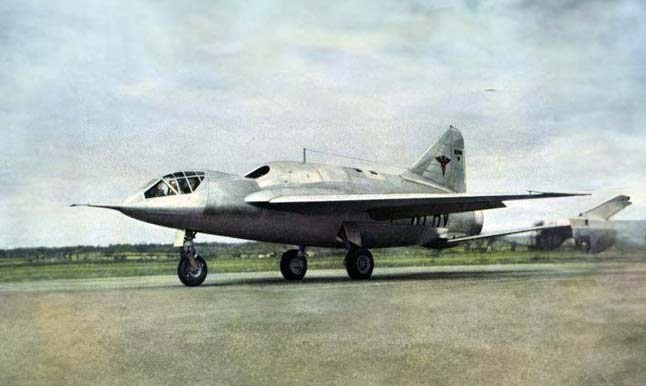The Sud-Ouest SO.2400 Grognard was a French experimental bomber, notable for its jet-powered design in the early Cold War era.
In brief
The Sud-Ouest SO.2400, known as “Grognard,” was an ambitious post-World War II project in France, aiming to develop a jet-powered bomber. Introduced in the early Cold War period, it was designed during a time of rapid technological advancement in aviation. The SO.2400 stood out with its twin-jet engine configuration, intended to provide high speed and heavy payload capabilities. Despite its innovative design and promising features, the Grognard remained a prototype and did not enter mass production or operational service. Its development was a reflection of the era’s experimental approach to aircraft design, as nations sought to establish their technological prowess in jet aviation.
The Sud-Ouest SO.2400 Grognard represents a significant chapter in the history of military aviation, particularly in the context of post-war France’s efforts to advance its aerospace technology.
History of the Development of the Sud-Ouest SO.2400 (Grognard)
Following World War II, the aviation industry witnessed a technological leap, with jet propulsion becoming the forefront of military aircraft development. This era was marked by intense competition among nations to establish supremacy in jet technology. In this context, France, keen on rebuilding its aviation industry and asserting its technological independence, embarked on the development of the Sud-Ouest SO.2400 Grognard.
The project was initiated by the French manufacturer Sud-Ouest, aiming to create a jet-powered bomber that could meet the strategic needs of the French Air Force in the burgeoning Cold War era. The objective was to develop an aircraft that could deliver a significant payload at high speeds and over long distances, a capability that was becoming increasingly important given the global geopolitical climate.
The SO.2400 program was launched in the late 1940s, with the first prototype taking flight on May 3, 1951. The Grognard did not receive a NATO nickname, as it was an experimental and uniquely French project.
Design of the Sud-Ouest SO.2400 (Grognard)
The design of the SO.2400 Grognard was cutting-edge for its time, reflecting the era’s innovative engineering approaches. It featured a twin-jet engine configuration, utilizing two Rolls-Royce Nene turbojet engines, each producing significant thrust. This powerplant choice was indicative of the early jet age, where British engines were often used in European aircraft designs due to their advanced development.
The aircraft had a length of around 23.5 meters (77 feet) and a wingspan of approximately 22 meters (72 feet). Its airframe was designed to accommodate a sizable payload, with internal bomb bays and provisions for external stores.
One of the key advantages of the Grognard’s design was its potential for high-speed performance and payload delivery. However, the design also faced drawbacks, including challenges related to engine reliability and the complexity of maintaining a sophisticated jet bomber.

Performance of the Sud-Ouest SO.2400 (Grognard)
The performance of the SO.2400 Grognard was reflective of the early jet age. With its Rolls-Royce Nene engines, the aircraft was expected to achieve a top speed of around 1,000 km/h (620 mph), which was competitive for bombers of that era. The expected service ceiling was approximately 13,000 meters (42,650 feet), with a range that allowed for strategic bombing missions.
When compared to contemporaries like the English Electric Canberra or the American B-47 Stratojet, the Grognard was a comparable performer in terms of speed and altitude capabilities. However, it lagged in aspects such as operational range and payload flexibility.
Variants of the Sud-Ouest SO.2400 (Grognard)
The Sud-Ouest SO.2400 Grognard remained primarily in the prototype stage, with only one primary version being fully developed and tested. The project did not progress to the development of multiple variants or specialized models, as it was terminated before reaching that stage of evolution.
Military Use and Combat of the Sud-Ouest SO.2400 (Grognard)
The SO.2400 Grognard did not see active military service or combat, as it remained an experimental prototype. The aircraft’s role was primarily for testing and evaluation within France, aimed at advancing the country’s jet-powered bomber capabilities.
The Grognard did not participate in any conflicts, nor was it exported to other countries. Following the conclusion of its testing program, the aircraft was not adopted by the French Air Force, and the project was eventually discontinued in favor of other aircraft designs.
The Sud-Ouest SO.2400 Grognard stands as a testament to the innovative spirit of the early Cold War era in aviation history. While it did not enter production or see combat, its development was reflective of the period’s ambitious aims and the challenges of advancing jet technology. The Grognard’s legacy lies in its contribution to the evolution of jet bomber design, marking a significant step in France’s post-war aerospace endeavors.
Back to the experimental aircraft section.